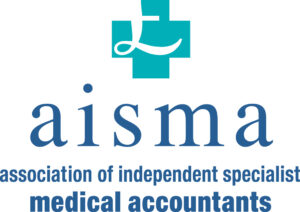As GP practices fight to keep staff amidst a cost-of-living crisis – plus low pay awards and superannuation rate rises – Sally Sidaway* looks at what they can do to help ride the storm.
We are surrounded by news of the cost-of-living rise and its pending effect, especially on employees at the lower end of the pay scale.
Against this, GP practices face an ever-increasing workload as they strive to recover from the pandemic, coupled with probably the greatest workforce crisis in NHS history.
The government has accepted the NHS Pay Review Body recommendations, awarding a 4.8% annual increase for Agenda for Change staff and around a 4.5% rise for salaried GPs.
This is much higher than the 3% budgeted for in the contract and primary care is so far being left to fund the additional costs of practice staff despite calls for this to change. Meanwhile the deepening workforce crisis really questions the government’s commitment to recruit an additional 6,000 GPs and 20,000 other key primary care workers by 2024.
An average GP practice could be around £35,000-£40,000 worse off due to these unfunded increases but, if it cannot match pay rises in secondary care, the ability to retain staff will be undermined. If we see partners’ profit shares reducing, we face an even bigger risk to GP numbers.
The expanding budget for Additional Roles Reimbursement Scheme (ARRS) staff carries with it doubts over their availability and there is uncertainty too about the longer-term future of the PCN DES and what PCN funding beyond 2024 will really look like.
So – the perfect storm is upon us! What can we do to mitigate the severe cost pressure of rising practice staff costs?
Maximise use of ARRS staff roles
Practices must engage closely at PCN level to make sure they can take maximum advantage of ARRS staff who are largely, if not wholly, a paid-for resource.
It is now vital for PCNs to do all they can to find, train and make use of these individuals. All practices must make their voices heard at the PCN and ensure sharing of these staff benefits all.
Care co-ordinators, for example, are a relatively low-paid reimbursed staff category who can be used within the practice for a wide range of duties within the allowable remit. Look carefully at admin teams and be innovative in beefing these up over time with care co-ordinators carrying out all duties relating to patient care co-ordination.
Clinical ARRS staff may need training to really improve GP workload but, when this is made to work well, it is invaluable. We have moved beyond the time when GPs and senior clinicians can be afraid to delegate, and we must embrace change within the day-to-day working of general practice.
Salaried GP time
We see differing rates of salaried GP pay per session from a regional perspective as well as job description variations.
It is important that practices ensure salaried GPs are paid an appropriate rate for work carried out. Some practices are, however, looking at different categories of salaried GP with greater and lesser levels of responsibility in terms of clinical and administrative responsibility.
Interestingly, when practices merge there are differing expectations of salaried GP work patterns and practices need to look carefully at the appropriate levels of pay for ‘differing roles.’
In the overall staff budget salaried GPs are going to be the highest individual cost. Be willing to consider with any staff role, as natural wastage occurs, if a like-for-like replacement is the best and most efficient way forward for the practice.
Can the workforce be rearranged so that salaried GPs are able to delegate an element of their work to another senior clinician such as a paramedic, physician assistant or clinical pharmacist?
Is an additional advanced nurse practitioner actually a better way to spend some of the staff budget? Of course, a willingness to train and change is needed to maximise the ability of these individuals to take some of the strain off the GPs.
Retainers
I am a great believer in this scheme. Look at using it to encourage GPs towards the end of their careers to stay longer with the added support of additional education. On top of the salary supplement, the practice will also receive, for example, £16,000 for four sessions’ worth of this valuable expertise. It is time-limited, but we need all we can get right now.
GP registrars
If you are not a training practice then consider if any of your GPs would be prepared to become a trainer, and give them the time and support to do this. The pay-back in time, after the initial training period in terms of work and continuity at the practice, really can make a huge difference.
GP fellowship scheme
Look at this scheme. It is available to all newly qualified GPs and nurses working substantively in general practice as a two-year fellowship programme of support with reimbursement of up to one session per week salary cost.
Staff time
Always remember your staff team is your greatest asset.
Practices need to award pay rises in accordance with the pay award recommendations but also in consideration of both the cost-of-living crisis and the competition you face as an employer. Without getting this right we face a huge exodus from general practice, one that will cost far more than the cost of getting the pay rise right now.
I would urge practices to look at different areas of their workforce in different ways and pay particular attention to staff who will suffer most from the current economic threats.
Despite this, practices have a finite budget to spend so practice and finance managers face a challenge.
Look at different staff groups and talk to your AISMA accountant as to how you compare with other practices for staff cost per patient in different staff groups.
Non-clinical staff
These have been averaging a cost of £35-£38 per raw patient. If you are significantly above this, excluding ARRS staff, then this needs to be reviewed.
Areas to look at:
- Unfunded PCN management time – does the practice need to charge the PCN for this, from some of the £1.50 per patient? Be aware of VAT on all PCN staff recharges – talk to your accountant.
- Overtime costs, particularly on reception – can this be better controlled with changes to rotas?
- Can care-coordinators take some of the admin burden and allow rearranging of duties as a funded resource?
- Split sites will be more expensive, but can you look at differing use of clinic times at different surgeries to reduce reception time needed?
- Extended hours times will need non-clinical time but maximise what work can be done in those times by those being paid.
Nurses and HCAs
This staff group covers a multitude of clinicians ranging in skill sets and pay scales. It is vital that you consider right person, right job.
We see averages of about £15 per raw patient but some significantly lower than this. If you are on the lower end this could mean a lack of delegation from senior clinicians which may be costing more than is sensible in the current primary care market.
For example, take chronic disease management and phlebotomy, both areas that bring extra practice income outside core funding. But profitability from these very much depends on the right level of staff being trained and trusted to carry out this work.
Clinical pharmacists
We see a mixed bag of opinion as to how well this works. I believe they can work extremely well where GPs are happy with an area of their workload redirected.
Training and peculiarities of list will remain a boulder to overcome but it is worth striving for.
Low level pay grade staff retention
To my mind this is the most acute of your current staff problems. The increase of 1.25% NICs has added both to employers and employees an additional extra unfunded cost. The current proposal is to reverse this from November which will help.
Lower scale pay rate full time employees also face an increase in employee’s superannuation rates from October 2023.
Take time to explain to your staff why this has arisen; the worst outcome in net take home pay is a nasty surprise staff were not expecting.
Helping lower paid staff
There may be some ways in these hard times practices can help lower paid staff:
Bonuses can be non-pensionable and, where paid to staff, will attract tax relief for partners within the practice accounts.
A bonus accrued and paid via payroll within nine months of an accounting year end attracts tax relief for that accounting period. These have been popular during Covid but beware habitual bonus patterns that could be then linked to an annual requirement. Bonuses could be used to supplement pay rise levels during the high inflationary period.
Consider the lowest paid staff carefully. Practices of course look at minimum and living wage rates, but these could still take you to an hourly rate below that paid by a local supermarket. The attraction of the bigger NHS pension is simply not going to help those employees for whom the cost-of-living crisis threatens day-to-day living.
Non-cash bonuses can be considered, such as vouchers not exchangeable for cash. Talk to your AISMA accountant about the rules and limits but these are proving attractive to some practices and should be explored.
Staff recruitment will be a challenge. Be innovative in flexibility around term time and part year workers but be careful not to fall foul of Working Time Regulations in terms of annual statutory holiday.
Salary sacrifice schemes – these may have a place. Childcare vouchers and cycle to work schemes are particularly useful.
Staff expenses claims – where relevant make sure these are paid in a timely fashion.
Staff parties and other social functions, together with trivial benefits and small gifts, can all add to the wellbeing of a workforce and your AISMA accountant will be happy to discuss the HMRC rules.
So, we have some solutions and some alleviations to the pain in what is a very difficult economic time for practices. In all discussions with partners, it is important that they remember any additional cost for staff will attract tax relief, so for most the maximum actual cost would be 60% of the pay rise, bonus, or additional cost.
GP partners are facing huge tax bills and also, for some, annual allowance tax charges, so the cost may not be as high as it seems!
I think it is vital for practice or finance managers to prepare a detailed staff budget and compare to actual throughout the year as things change. Locum and staff overtime use should be particularly carefully controlled.
We have no magic wands, but careful thought and measured control will help keep good staff teams in place.
*Sally Sidaway is medical client director at Morris Crocker
This article first appeared in the Autumn 2022 issue of AISMA Doctor Newsline – you can download the issue here




